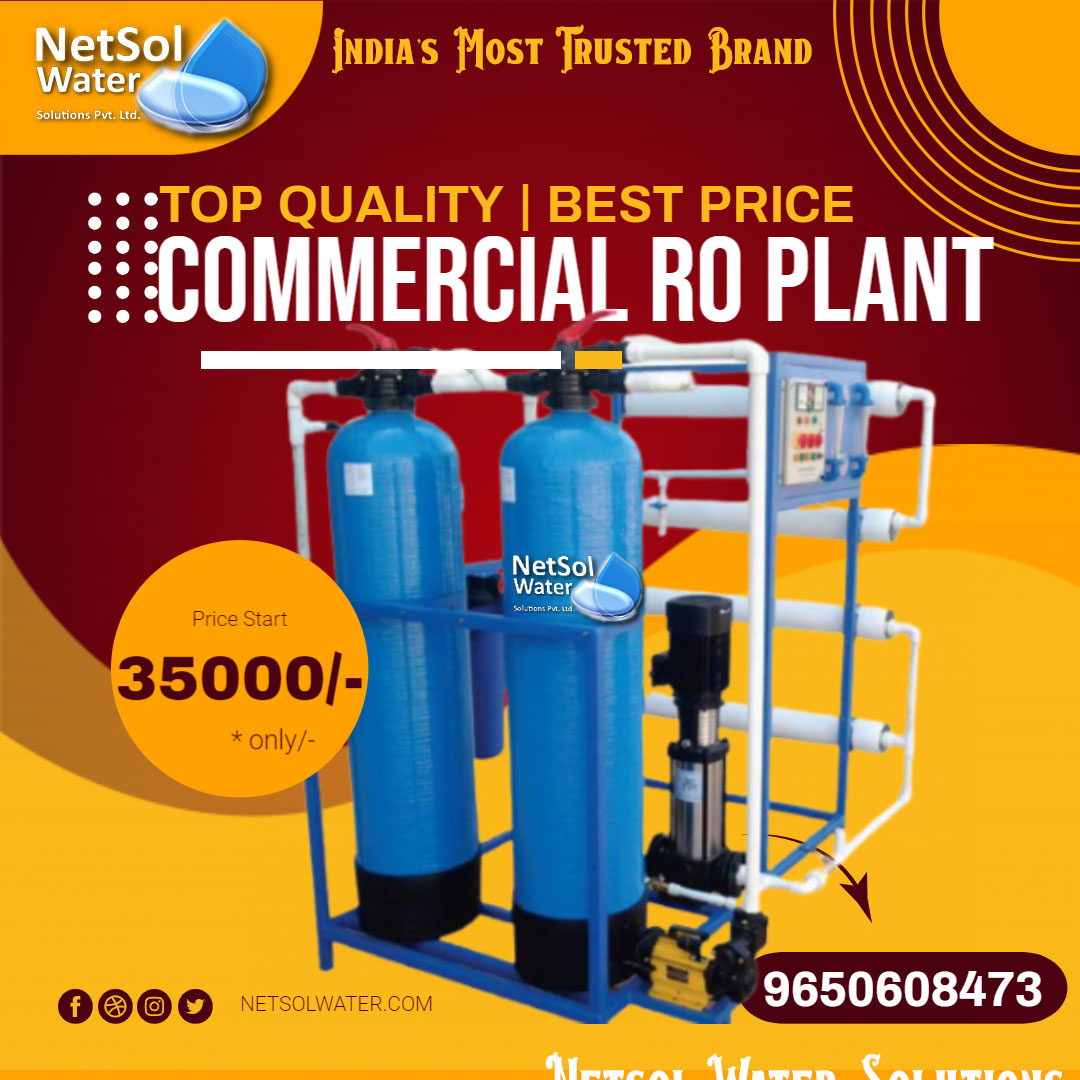Who is the Best Commercial RO Plant Manufacturer in Delhi?
As we know that osmosis is a natural process that takes place in our bodies on a daily basis. It has happened in nature for thousands of years. ‘Jean-Antoine Nollet’, a French theologian and physicist, found it experimentally for the first time in 1748. He was able to duplicate the osmotic process using a pig's bladder as a membrane, proving that solvent molecules from low solute water could move through the bladder wall into a greater solute concentration constituted of alcohol. He proved that utilizing natural osmotic pressure, a solvent could efficiently flow through a semi-permeable membrane, and that the solvent would continue to enter through the cell membrane until dynamic equilibrium was achieved on both sides of the bladder.The study of osmosis would all but vanish for the next 200 years, until late in the 1940s, when scientists from renowned American universities began to re-examine the issue.
The world's first commercial RO plant was established at Coalinga, California, with the assistance and direction of Joseph W. McCutchan and Sidney Loeb, and its novel endeavour captured the interest of engineers and governments from all over the globe in 1965.
This great dream of mankind being able to desalinate sea water on a large scale and at a fair cost was finally becoming a reality!
The development quickened as other pilot programs came up in locations like La Jolla and Firebaugh, California, to test various types of brackish and saltwater. Membrane technology would become more relevant and cost-effective as a consequence of the innovations and discoveries of these and other contributions, and many heavy industries would profit from clean water.
Use of RO and Membrane filtration
Reverse Rsmosis (RO) and membrane filtering elements are already used in hundreds of processes and applications throughout the world, and the industry is expected to expand rapidly in the near future.As natural clean water sources grow more limited and the worldwide trend of desertification continues, commercial RO Plants processing facilities now provide much of the clean water used by certain communities and even small nations.Most people are unaware, yet clean water may soon become one of the world's most precious commodities, making RO technology one of humanity's greatest scientific achievements.
Commercial reverse osmosis water purifying devices can be used for military purpose
A reverse osmosis water purification unit is a self-contained water treatment system that is portable. It is intended for military usage and can deliver potable water from almost any water source. Some versions are containerized, while others are trailers or vehicles in their own right.Each branch of the armed services has its own set of Commercial RO Plant types. The raw water is pumped into the reverse osmosis water purification unit module, where it is treated with a polymer to induce coagulation. It is then passed through a multi-media filter, where it receives initial treatment by eliminating turbidity. After that, it is forced through a cartridge filter, which is typically spiral-wound cotton. This method clears the water of any particles greater than 5 m in size and removes practically all turbidity.
The cleared water is then pumped through a high-pressure piston pump into a series of tanks where reverse osmosis takes place. The product water is free of 90.00–99.98 percent of the total dissolved solids in the raw water and should have no more than 1000–1500 ppm electrical conductivity as per military requirements. It is then chlorine-disinfected and preserved for future use.
Reverse osmosis driven by solar energy
A photovoltaic system turns solar electricity into the requisite energy for reverse osmosis in a solar-powered Commercial RO unit, which produces potable water from salt water. Solar-powered reverse osmosis lends itself well to drinking water filtration in rural situations without an electricity grid due to the widespread availability of sunlight across diverse geographies. Furthermore, solar energy avoids the high energy operational costs and greenhouse gas emissions of traditional reverse osmosis systems, making it a sustainable freshwater option suitable for developing countries.
While the intermittent nature of sunshine and its varying intensity during the day makes predicting PV efficiency and desalination throughout the night problematic, numerous options exist. Batteries, for example, which supply the energy necessary for Commercial RO units during non-sunlight hours, may be utilized to store solar energy throughout the day. Alternative technologies for solar energy storage exist in addition to the usage of traditional batteries. Thermal energy storage systems, for example, overcome this storage problem while also ensuring consistent performance even during non-sunlight hours and overcast days, enhancing total efficiency.
Why is Netsol Water a one-stop shop for water treatment equipment’s?
Netsol Water is a prominent Commercial RO Plant Manufacturer in India, having its headquarters in Greater Noida. A commercial reverse osmosis plant is a production facility that uses the reverse osmosis method. It is a well-established method for purifying or desalinating polluted water by pushing it through a membrane. Softening, de-chlorination, and anti-scale treatment are all required pre-treatment processes for commercial reverse osmosis facilities. Following pre-treatment, high pressure forces water through a semi-permeable membrane, which keeps all impurities while allowing pure water to pass through.
The amount of energy required by the Commercial RO Plant will be determined by the concentration of salts and pollutants in the influent water. The RO plant will require more energy to handle larger concentrations. Our RO Plant incorporates technology that adheres to set industry requirements as well as high-quality components.




